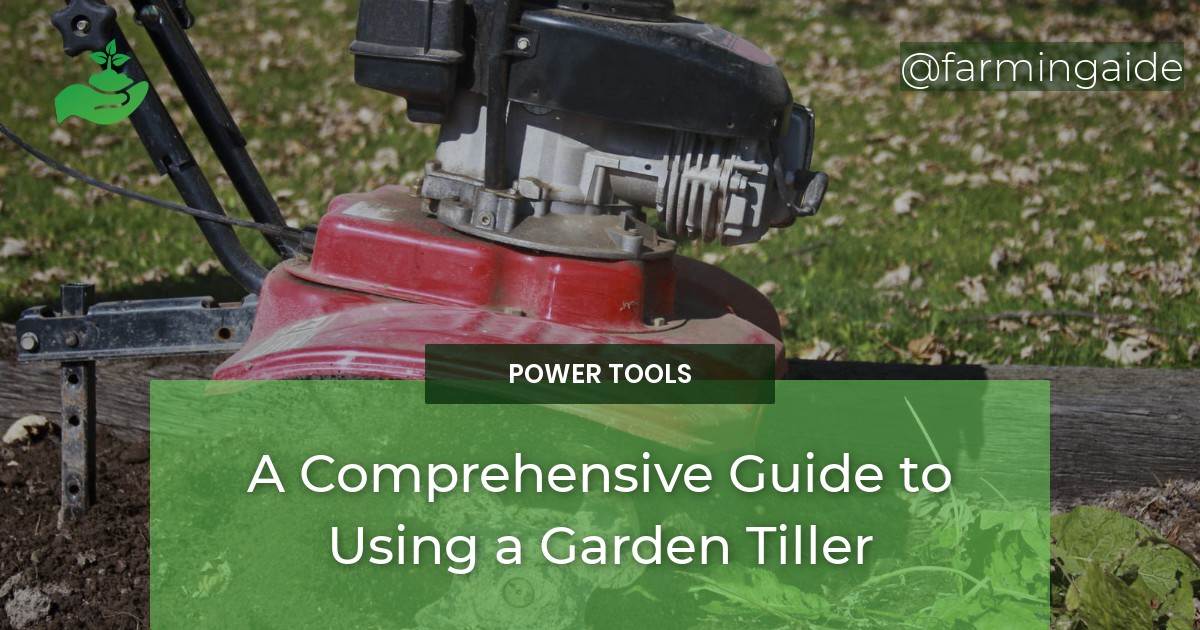Gardening can be a fun and fulfilling hobby, especially when you have the right tools. One of the most important tools for any gardener is a garden tiller. A garden tiller is a tool that is used to prepare the soil for planting. It can save you a lot of time and effort compared to manual methods of tilling, and it can make your gardening tasks much easier.
In this article, we will discuss the different types of garden tillers, safety precautions, preparing the soil, using a garden tiller, proper maintenance of the garden tiller, and much more.
Table of Contents
Types of Garden Tillers
There are three main types of garden tillers: front-tine tillers, rear-tine tillers, and vertical-tine tillers. Each type of tiller has its own unique features and benefits.
Front Tine Tillers
Front tine tillers are the most popular type of tiller. They have a set of tines located at the front of the machine that digs into the soil. Front tine tillers are ideal for small to medium-sized gardens and are great for soil preparation.
Rear Tine Tillers
Rear tine tillers have tines located at the rear of the machine that provides more power and traction. Rear tine tillers are ideal for larger gardens and can handle tougher soil conditions.
Vertical Tine Tillers
Vertical tine tillers have tines that rotate vertically and are ideal for breaking up hard soil. They are also great for creating raised garden beds.
Safety Precautions
Before you begin using your garden tiller, you need to take some safety precautions to avoid accidents and injuries.
Wear Protective Clothing and Gear
Always wear protective clothing and gear when using a garden tiller. This may include gloves, safety glasses, sturdy shoes, and ear protection.
Keep Children and Pets Away
Make sure that you keep children and pets away from the area where you will be using the garden tiller. They should be kept at a safe distance to avoid accidents.
Make Sure the Area is Clear of Debris
Before you start tilling, make sure that the area is clear of debris, such as rocks or branches. They can get caught in the tines and cause damage to the machine or injury to the operator.
Preparing the Soil
Preparing the soil is an important step in using a garden tiller. It can help to ensure that your plants grow healthy and strong.
Remove Rocks and Debris
Remove any rocks or debris from the area to be tilled. This will prevent damage to the machine and ensure that the tines can get deep enough into the soil.
Check the Soil Moisture
Check the moisture level of the soil before you start tilling. The soil should be moist but not wet. If the soil is too dry, it will be difficult to till, and if it is too wet, the soil will clump and make it difficult to work with.
Mark the Area to be Tilled
Mark the area that you want to till with stakes or flags. This will help you to stay on track and ensure that you cover the entire area.
Using the Garden Tiller
Using a garden tiller can be a bit tricky, especially if you are a beginner. Here are some tips to help you get started.
Adjusting the Depth of the Tiller
Adjust the depth of the tiller according to the type of soil you are working with. For soft soil, set the tines to a shallow depth, and for hard soil, set the tines to a deeper depth.
Using the Tiller in Straight Lines
Use the tiller in straight lines to avoid overlapping sections of soil. Overlapping can lead to uneven tilling and make it difficult to plant your crops.
Tilling in Wet or Dry Soil
Tilling in wet soil can cause the soil to clump, and tilling in dry soil can cause the soil to become hard and compacted. The best time to till the soil is when it is moist but not wet.
Can I Use a Garden Tiller to Edge My Garden Instead of a Garden Edger?
Yes, you can choose and use a garden edger to create clean and defined edges for your garden. While a garden tiller can help with soil preparation, it is not designed for precise edging. For the best results, opt for a dedicated garden edger to achieve professional-looking garden edges.
Proper Maintenance of the Garden Tiller
Proper maintenance of the garden tiller is important to ensure that it lasts for many seasons. Here are some tips for maintaining your garden tiller.
Cleaning the Tines and Blades
Clean the tines and blades after each use to prevent rust and keep them sharp. Use a wire brush or scraper to remove any debris.
Checking the Oil and Fuel Levels
Check the oil and fuel levels regularly to ensure that the machine is running smoothly. Follow the manufacturer’s instructions for changing the oil and replacing the fuel.
Storing the Tiller in a Dry and Secure Place
Store the tiller in a dry and secure place, such as a garage or shed. Cover the machine with a tarp to protect it from the elements.
In conclusion, using a garden tiller can make your gardening tasks much easier and save you time and effort. By following these tips and techniques, you can prepare your soil for planting and keep your garden healthy and vibrant. Remember to take the necessary safety precautions, prepare the soil properly, use the tiller correctly, and maintain the machine regularly. With these tips and techniques, you can enjoy a successful growing season and a beautiful garden.


